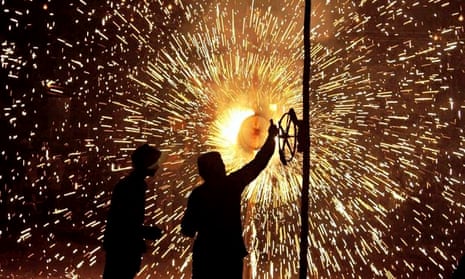Around the world, air pollution from fireworks causes substantial, if short-lived, pollution problems. These include fireworks at New Year across China, Diwali in India, the Yanshui festival in Taiwan, and numerous traditional festivals in Mediterranean cities.
In the UK smoke from Guy Fawkes fireworks and bonfires can make 5 November a unique day in the air pollution calendar. Pollution from fireworks is full of tiny metal particles that are used to power rockets and to make firework colours. These include copper (green), barium (blue) and strontium (red), along with lead, titanium and antimony to produce crackles and sparkles and potassium and toxic organic compounds from rocket propellants.
On Guy Fawkes Night this year, air pollution reached the top level of 10 on the UK scale across the West Midlands, Merseyside, Manchester and Yorkshire. For the West Midlands this was the most polluted day since March 2013.
Air pollution increased rapidly soon after dusk and persisted through to the next day, hitting level 9 on 6 November. Drizzle and breezy weather meant levels remained low across southern England, with the exception of Lewes in East Sussex, where traditional bonfire societies celebrate with zeal.
The West Midlands was the UK’s pollution centre during November, with further pollution problems during the cold frosty nights of the 20th, 24th and 25th. The month ended with moderate and high air pollution across Northern Ireland, where solid fuel and oil are commonly burnt for home heating.

Comments (…)
Sign in or create your Guardian account to join the discussion